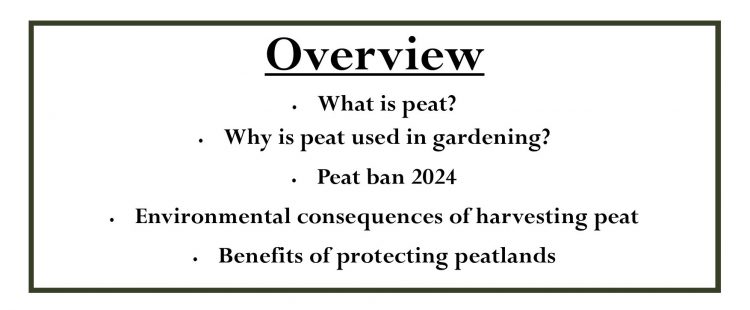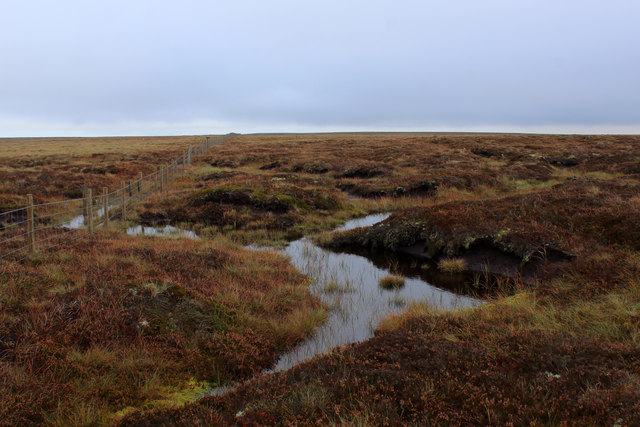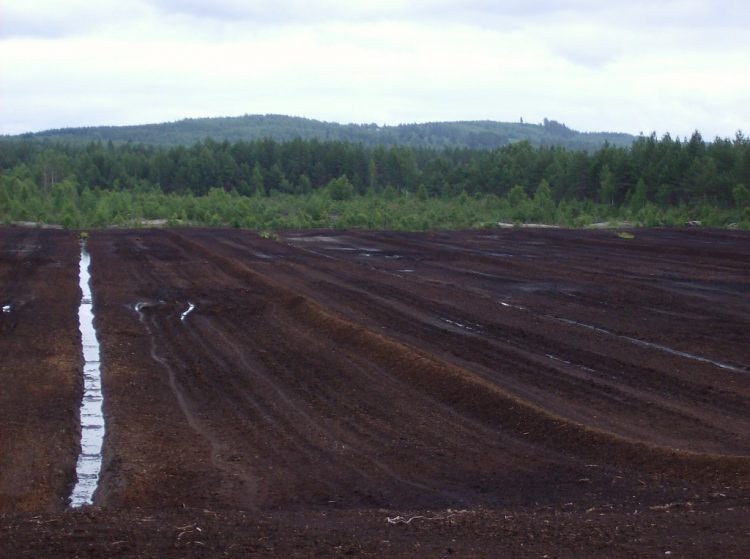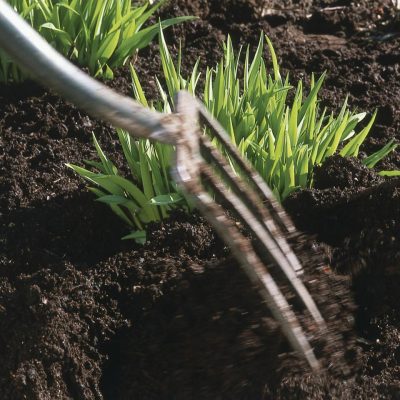
On the 27th of August 2022, the UK Government announced that the sale of horticultural peat to gardeners in England and Wales will be banned by 2024 (GOV.UK, 2022).
So, what is peat? Why is it being banned?
See also our page on transitioning to peat free gardening!
What is Peat?
Peat is an organic surface layer of soil, formed from the accumulation of partially decomposed plant material from over 12,000 years ago. This plant material has accumulated because of water logging, oxygen deficiency, high acidity, and nutrient deficiency in the soil.
Peat forms in wetland, AKA peatland, like swamps, bogs, fens, and moors. These waterlogged conditions prevent the plant material from fully decomposing, thus the production of organic matter exceeds its decomposition, causing the accumulation of peat.
Peat favours warm moist climatic conditions the most! Yet, peatlands can be found in many regions of the globe, including temperate, boreal, and sub-arctic regions.

Peat in Gardening:
Peat has major uses in gardening; it has been a staple ingredient of composts and growing media for decades, with the retail horticultural sector accounting for 70% of peat bought in the UK (GOV.UK, 2023). This widespread use is due to its number of important functions to plants:
- As peat forms in the acidic and sterile conditions of fens and bogs, it is not contaminated by weeds or pathogens.
- Peat-based growing media is inert, meaning all microbial activity has ceased. Because of this, peat produces standardised and consistent products.
- Peat has a naturally low PH level, so can be helpful for acidic loving herbs, fruits, and vegetables, e.g., blackberries, parsley, potatoes, and raspberries.
- Peat has air pockets/pores that supply oxygen to the plant root and allow for drainage.
- It also has a large moisture-holding capacity of up to 20 times its own dry weight, thus providing water support for plant growth.
However, peat isn’t perfect: although it is also good at holding in nutrients from sources like fertilisers and other organic matter, peat does not have many natural nutrients to enhance the growth of herbs and vegetables. It is also susceptible to drying out and is hard to remoisten once dried.
Peat ban 2024
On the 27th of August 2022, the UK Government announced that the retail sale of horticultural peat to gardeners in England and Wales will be banned by 2024 (GOV.UK, 2022), with the aim of protecting England’s 1 million acres of peatland and our wider environment:
- Harvesting peat involves removing the living surface of soil to access the partially decomposed matter underneath; harvesting peat destroys peat bogs and thus the habitats of unique plants (e.g., sundews), rare birds (e.g., hen harriers), and butterflies.
- Peatlands can be beneficial in reducing the risk of flooding and flood surges, due to peat’s high water holding capacity.
Harvesting peat is unsustainable; peatlands take thousands of years to form, as peat grows at a rate of just 1cm every 10 years (BBC Science Focus, 2022). Thus, peatlands are depleted far faster than they are replenished.
One major concern surrounding peat extraction is the release of greenhouse gases into the atmosphere, and its contribution to global warming:
- Normal plants decompose into CO2, but as peat is formed in watery, oxygen-free bogs, it decomposes into carbon. Peatlands contain about 25% of the global soil carbon stock, which is equivalent to twice the amount of carbon in the world’s forests (Leifeld et al., 2019).
- When peatlands are drained prior for mining for horticultural use, these reserves of stored carbon are unlocked. The organic carbon, which is normally underwater, is exposed to air and oxidises into CO2. It is then released into the atmosphere.
- When peat is spread onto a field or garden, the carbon inside also turns into CO2.

A peat bog destroyed by mining
Benefits of protecting peatlands:
- Protecting intact peatlands and restoring drained ones through rewetting can protect their unique biodiversity and help mitigate against the effects of flooding.
- Peatlands are not just a source of carbon, but they also act as a carbon sink; peatlands can capture and store CO2 from the atmosphere (Hooijer et al., 2010). Protecting them can increase this role.
- Currently, peatlands release more carbon than they store. Fortunately, Wilson et al. (2013) expects that protection and restoration may reverse this trend. This can happen by 2100, but only IF about 60% of the current degraded peatlands are rewetted, and intact ones are protected (Humpenöder et al., 2020).
This ban is important, as substantial cuts in greenhouse gas emissions must be made to reduce global warming by 1.5-2 degrees Celsius, in line with the 2015 Paris Agreement.
